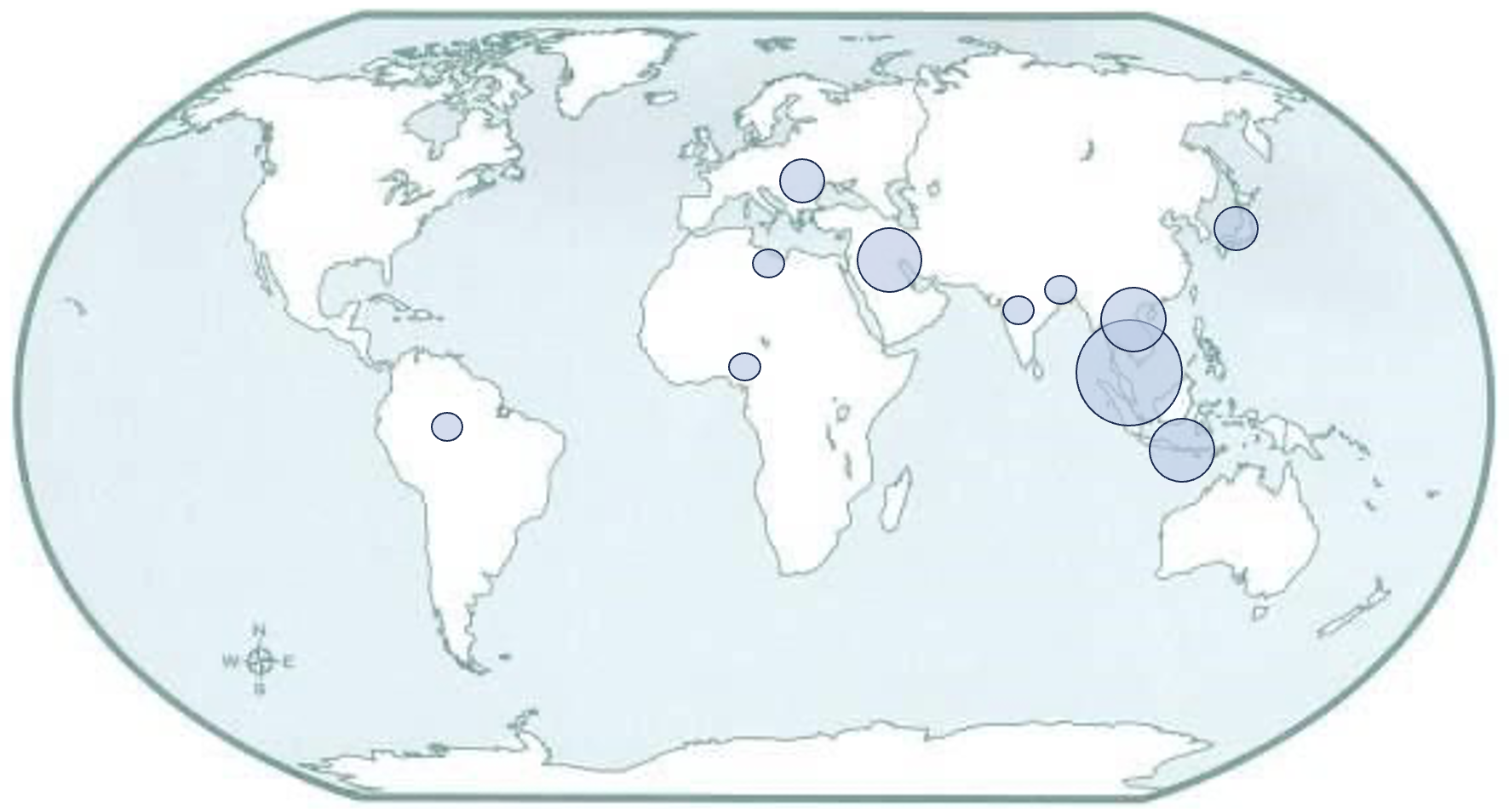Effect of Silver Doping on the Microstructure and Photocatalytic Performance of Ag-TiO2 Coatings on Unglazed Ceramic
DOI:
https://doi.org/10.37934/armne.25.1.1426Keywords:
Unglazed ceramic tile, Ag-TiO2 coating, Sol gel dip coating, Ag mol %Abstract
TiO2 coating photocatalytic activity is limited to short-wavelength ultraviolet (UV) irradiation. To extend its potential to the visible range, doping with semiconductors such as silver (Ag) has been proposed. The optimal amount of Ag incorporation is still under investigation. High Ag concentrations can decrease surface charge, causing agglomeration of Ag species and reduction to Ag° particles on the TiO2 surface. On the other hand, lower Ag concentrations lead to the formation of AgO, Ag2O and Ag°. In this study, Ag-TiO2 coatings were deposited on unglazed ceramic tiles using the dip coating method, with silver contents of 2.5, 5 and 7.5 mol %. The effects of Ag content on the crystalline phase, crystal size, elemental distribution, morphology and cross-sectional surface were analysed. The coatings were heat-treated at 500 °C and characterized using X-ray diffraction (XRD), scanning electron microscopy (SEM) and field emission scanning electron microscopy (FESEM). Photocatalytic performance was evaluated through the degradation of methylene blue under both UV and visible light irradiation. XRD analyses revealed the presence of anatase, rutile, Ag2O and metallic Ag in all samples. The degree of crystallinity and anatase crystallite size increased with higher Ag content. Surface morphology showed visible cracks and a dense surface at 2.5 and 5 mol % Ag, while the 7.5 mol % Ag coating exhibited a wavy surface. Energy-dispersive X-ray spectroscopy (EDS) on the surface and cross-sectional layers confirmed the presence of Ti, O and metallic Ag particles. The Ag-TiO2 coating with 2.5 mol % Ag demonstrated better photocatalytic activity under UV light irradiation, while the 7.5 mol % Ag coating exhibited the highest photocatalytic activity under visible light irradiation.
Downloads

























